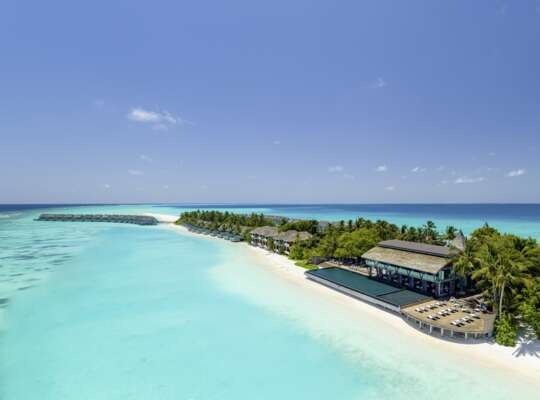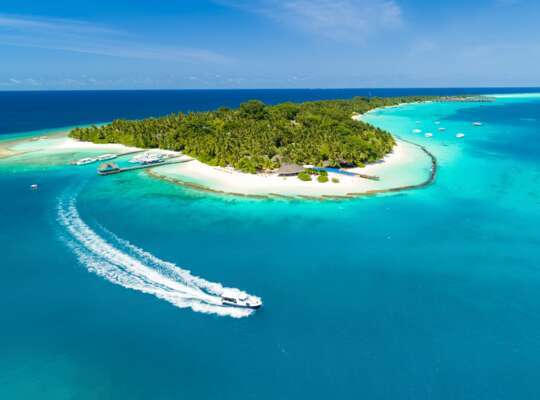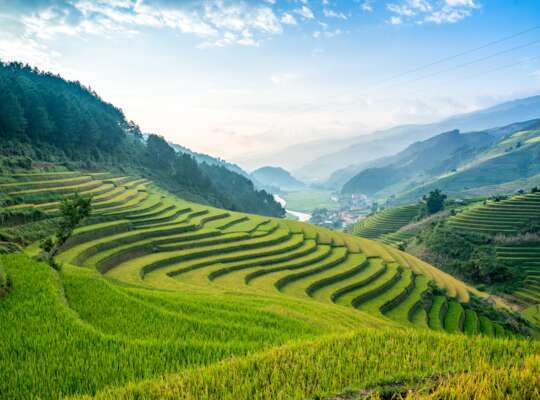Italy’s charming islands, Sardinia and Sicily, each have their own distinct personalities. But they share plenty: enticing beaches, rich histories and drool-worthy cuisine. Our expert guide reveals everything you need to know about these Mediterranean treasures, including which is the best Italian island to visit and when to go.
Getting there and getting around
Both islands have the advantage of easy, direct access from London and other regional airports during peak season. Once your feet touch Italian soil, picking up a hire car turns your holiday into an adventure. Winding coastal roads reveal hidden gems like Cala Gonone in Sardinia and Riserva dello Zingaro in Sicily, both of which are a photographer’s dream.
Sicily is the largest Mediterranean island. Driving from the north (San Vito Lo Capo) to the south (Capo Passero) can take around four to five hours. To see the most of the island, we recommend staying for about 10 days.
Sardinia is slightly smaller. To drive from Olbia in the north down to Cagliari in the south takes around two hours. We’d say a week’s stay is plenty of time for you to explore most of the island.
Beaches and coastlines
In the battle of Sardinia vs Sicily beaches, it’s a stalemate. Both have jaw-droppingly beautiful coastlines and snorkelling and diving in Sardinia and Sicily is a treat
If pristine beaches are your happy place, Sardinia takes the crown. The island has soft white sands that rival the Caribbean. The northern part of the island is more rugged and rocky, with intimate sandy bays scattered at the feet of jagged cliffs.
Head to the Emerald Coast (Costa Smeralda) and La Maddalena Archipelago, which has been a protected marine park since 1994. On the Emerald Coast, you’ll find chic resorts set alongside secluded coves. La Maddalena Archipelago is surrounded by crystal-clear waters, where a quick snorkel will reveal shoals of fish and Mediterranean morays. For something postcard-perfect, La Pelosa Beach in Stintino delivers powdery white sand and turquoise lagoons.
African winds have sculpted the south of Sardinia. Here you’ll find undulating dunes and quaint Mediterranean villages nestled among the pine trees. Instagram-worthy beaches here include Spiaggia di Nora, with its ancient church watching peacefully over the bay.
In contrast, Sicily brings plenty of drama to the table. San Vito Lo Capo wows with its golden sands framed by rugged cliffs, while Cefalù’s historic town adds a splash of culture to your beach day. Don’t miss Ustica Island, a diver’s paradise, or Isola Bella, a rocky islet only accessible from Taormina by cable car. The reward? Snorkelling in aquamarine waters teeming with marine life.
Sicily’s Mondello Beach, near Palermo, combines soft white sands with a vibrant atmosphere thanks to its Art Nouveau beach huts and buzzy local restaurants. For a more secluded escape, head to Scala dei Turchi, where shimmering turquoise waters meet striking white limestone cliffs.
Read more about the best beaches in Italy
History and culture
Sicily has been populated since 14,000 BC and Sardinia since 6,000 BC. That equates to a lot of history. In Sardinia, visit the mysterious Nuraghe ruins, such as Su Nuraxi di Barumini, which date back to 1500 BCE. Seek out traditional festivals like the lively Sant’Efisio Festival in the capital Cagliari. Or visit Alghero, known as ‘Little Barcelona’, where you’ll discover the island’s Catalan influence through Gothic architecture and seafood paella.
While in Sicily, don’t forget to check out the ancient Greek settlement of Syracuse. There, you can set off on a full-day tour, taking in sites such as the Temple of Apollo and the grand cathedral.
Film buffs can relive iconic scenes on the Footsteps of the Godfather Tour, while history lovers will be busy soaking up stories from Greek, Roman and Norman settlers. Sicily offers many historic treats like the Valley of the Temples in Agrigento, as well as Baroque towns like Noto.
Food and wine
Food is life in Italy and both islands deliver the goods. In Sardinia and Sicily, you’ll find flavour-packed traditional dishes alongside more experimental modern cuisine.
Sardinian delights include culurgiones (fresh pasta filled with potatoes and mint) and crispy paper-thin pane carasau – a type of flatbread. Indulge in Cannonau, a local red wine brimming with bold character. Try dishes like malloreddus (saffron-infused gnocchi) and seadas (a cheese-filled pastry drizzled with honey) for an authentically rustic taste of the island.
Sicily’s culinary fame precedes it – think arancini (crispy rice balls), creamy cannoli and refreshing granita. Why not elevate your experience with a Sicilian cooking class? Whether you’re spinning pizzas or preparing more traditional dishes, most classes start with a trip to a local market – the ultimate Sicilian food experience.
Outdoor adventures
Both islands are packed full of epic hiking trails, adrenaline-pumping water sports and scenic cycling tracks just waiting to be explored.
In Sardinia, the breeze is perfect for sailing or windsurfing. Back on dry land, you can hike the Gola di Gorropu Canyon, nicknamed ‘Europe’s Grand Canyon’. For thrill-seekers, rock climbing and mountain biking in the Gennargentu Mountains is a must. The island’s highest peak, Punta La Marmora (1,843 metres), dominates this central mountain range.
In Sicily, the main hiking draw is the awesome Mount Etna, which is a UNESCO World Heritage Site. Etna stands at 3,350 metres and is the highest volcano in Europe. There’s also an option to visit it by train or cable car if you’d rather take a load off. Daredevils can try paragliding. Then, to ease off that adrenaline high, take a wine-tasting and vineyard tour on the fertile slopes of the volcano.
Where to stay
Here’s our pick of the most outstanding stays with real appeal. Choose whichever matches your vibe, whether you’re in the mood for family fun or a romantic escape.
Sicily
Taormina: The Ashbee Hotel is an enchanting boutique 1908 heritage villa with just 24 rooms. It’s a proud member of the ‘Leading Hotels of the World’ group. The restaurant here has two Michelin stars and its terrace stuns with glorious sea views.
Palermo: Villa Igiea, A Rocco Forte Hotel, is a sumptuous 19th-century palazzo. Flanked by Mount Pellegrino, it sits in a prime location by the sea with easy access to the city. Keep your eyes peeled for celebrities and royalty while you’re there – it’s been a favourite with A-listers for years.
Sardinia
L’Ea Bianca Luxury Resort is a supremely cosy hideaway. Its location right next to its own private beach means you can get your daily dose of Vitamin D within minutes of waking up.
Il Borgo, Forte Village, is a haven for families. Kids won’t be able to get enough of the Children’s Wonderland and expert-led sports academies, while adults can steal off for some guilt-free spa time.
Best time to visit Sicily and Sardinia
Sicily and Sardinia have similar Mediterranean climates. For the sunniest days, go from May to September. Visit in spring or early autumn to avoid the peak summer crowds.
So, which island will it be?
If you’re dreaming of pristine beaches and laid-back vibes, Sardinia is your best bet. For a blend of history, diverse landscapes and culinary adventures, Sicily has your name on it.
This feature was created on 28th November 2024. The information within this feature is correct to the best of our knowledge at the time of print.







_w=24_h=25.webp?v=b71667f1b0243497a8c080edd5d032e11f899818)
_w=24_h=25.webp?v=b71667f1b0243497a8c080edd5d032e11f899818)
_w=24_h=25.webp?v=b71667f1b0243497a8c080edd5d032e11f899818)